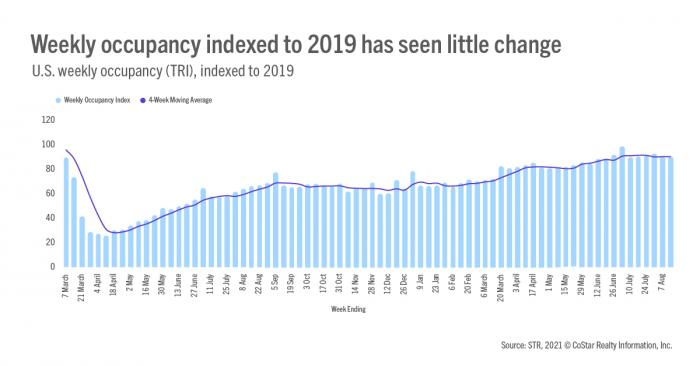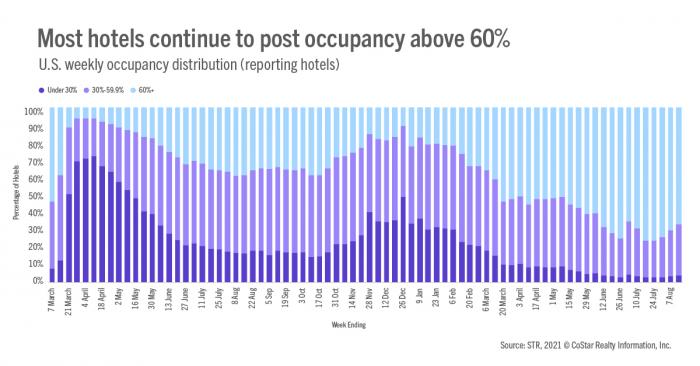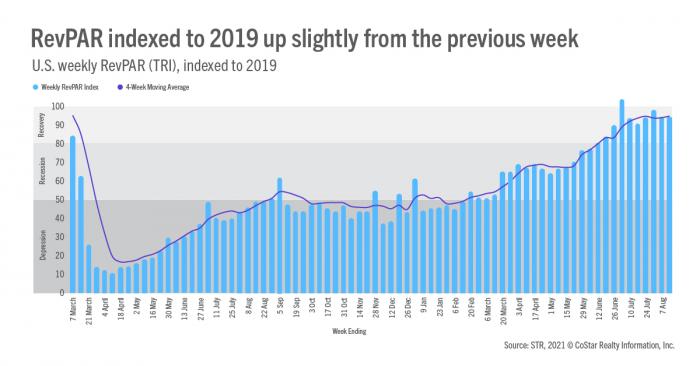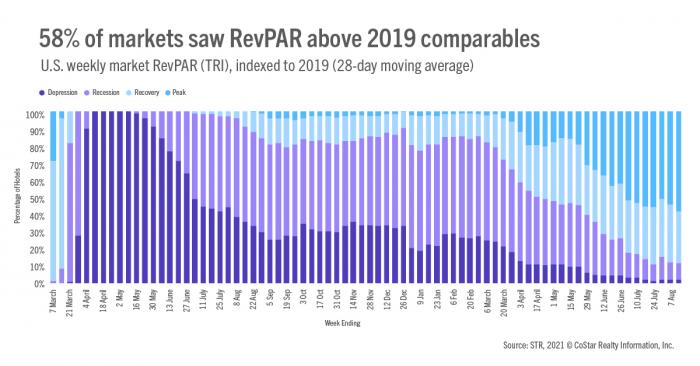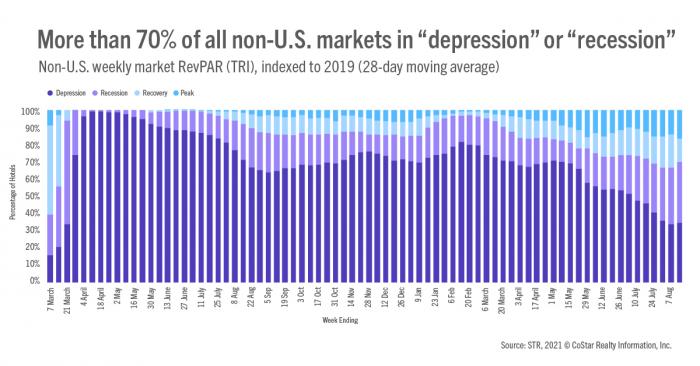Previous MRM versions: 31 July | 7 August
Week ending 14 August
U.S. occupancy fell for a third consecutive week, dropping by more than two points to 65.7% during 8-14 August 2021. Further, weekly occupancy was down more than five points when compared with the week of 24 July 2021. On a relative basis, however, the index to 2019 was down only 0.5 points, suggesting that the occupancy decline is a result of seasonality associated with the reopening of schools across the country. The weekly occupancy index to 2019 has seen little variation in the past six weeks. Of course, some of the occupancy decline can also be attributed to the increase in COVID-19 cases due to the Delta variant. On a total-room-inventory basis (TRI), which accounts for temporarily closed hotels, weekly occupancy was 63.3%. Currently, only one percent of rooms (64,000) are closed with nearly half of those closures in just three cities: New York, Orlando and San Francisco.
